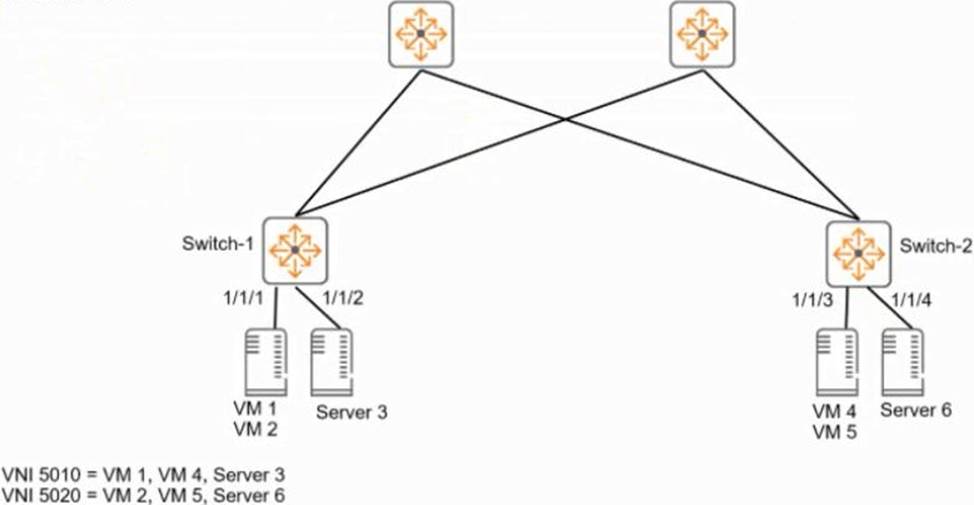- All Exams Instant Download
Is this part of the process for setting up VXLAN to meet the requirements?
Refer to the exhibit.

You need to set up an ArubaOS-CX switch to implement Virtual Extensible LAN (VXLAN) WITHOUT Ethernet VPN (EVPN). The exhibit Indicates which servers should be part of the same VXLANs and the desired VNls for the VXLANs. Assume that the network is already configured to permit each ArubaOS-CX switch to reach each other switch’s loopback interface.
Is this part of the process for setting up VXLAN to meet the requirements?
Solution: On Switch-1, create two VXLAN interfaces, one with ID 5010 and one with 1D 5020; both VXLAN interfaces should use 192.168.1.1 as the source IP address.
A . Yes
B. No
Answer: A
Explanation:
VXLAN is a feature of ArubaOS-CX that provides layer 2 connectivity between networks across an IP network1. VXLAN uses a 24-bit identifier called VXLAN Network Identifier (VNI) to segment the layer 2 domain1. VXLAN also uses a tunnel endpoint (VTEP) to encapsulate and decapsulate VXLAN packets1. A VXLAN interface is a logical interface that represents a VNI and is associated with a source IP address and a VRF1. To set up VXLAN without EVPN, you need to create VXLAN interfaces on each switch and configure static VTEP peers1. Based on the exhibit, Switch-1 needs to create two VXLAN interfaces, one with ID 5010 and one with ID 5020, to match the VNIs of the servers connected to it. Both VXLAN interfaces should use 192.168.1.1 as the source IP address, which is the loopback interface of Switch-1. Therefore, this is part of the process for setting up VXLAN to meet the requirements, and the correct Answer is yes. For more information on VXLAN and EVPN, refer to the Aruba Data Center Network Specialist (ADCNS) certification datasheet2 and the EVPN VXLAN Guide for your switch model1.
Latest HPE2-W09 Dumps Valid Version with 79 Q&As
Latest And Valid Q&A | Instant Download | Once Fail, Full Refund
Subscribe
Login
0 Comments
Inline Feedbacks
View all comments

